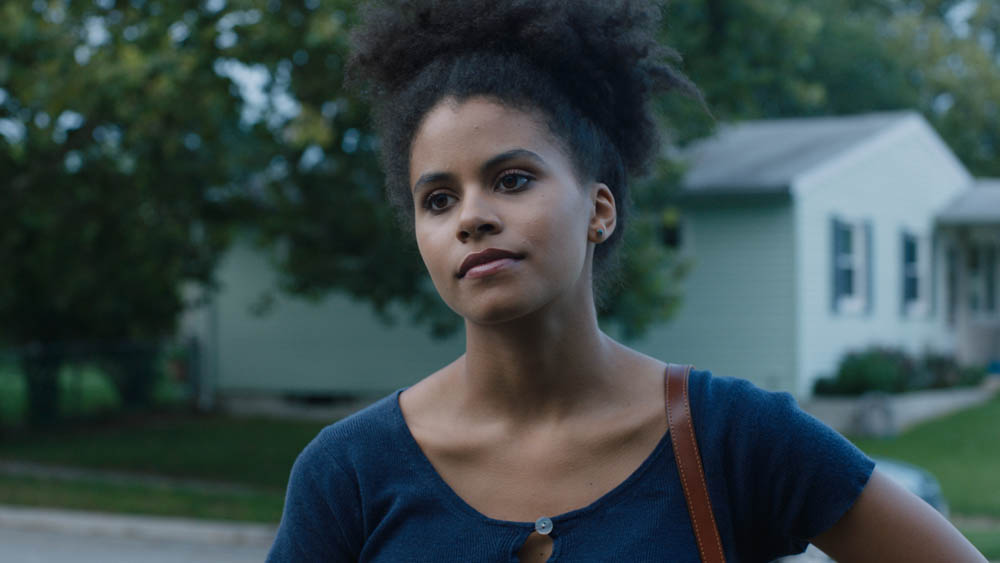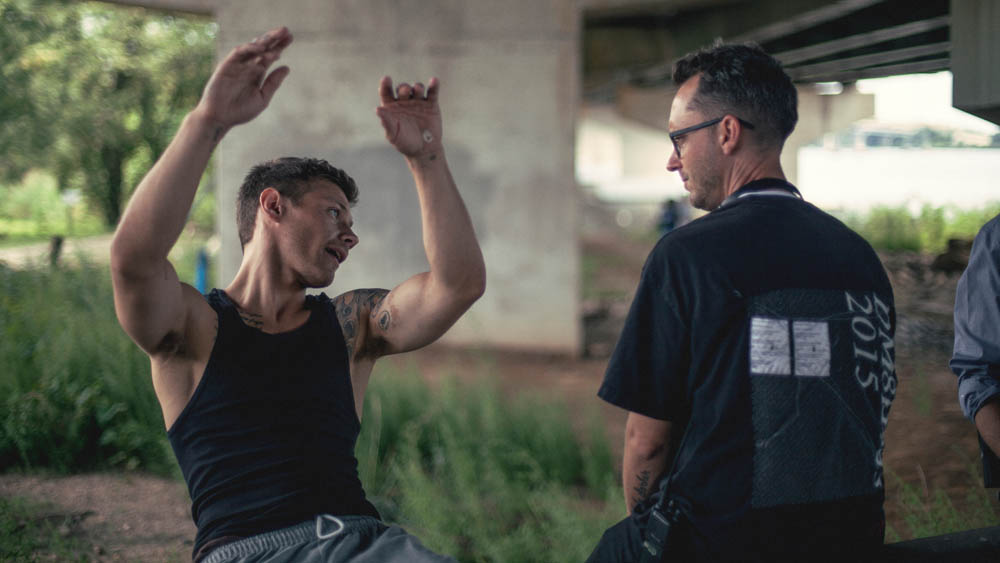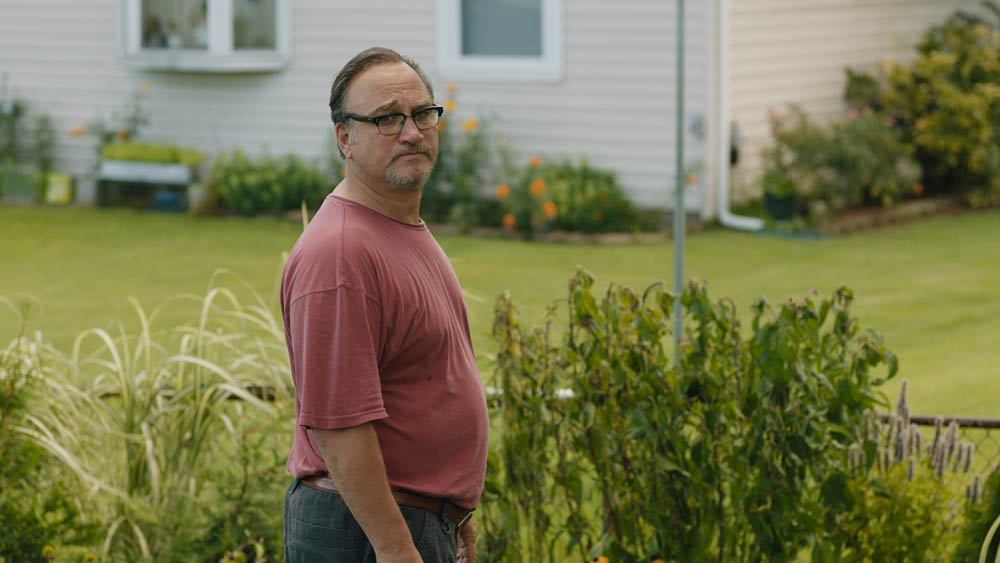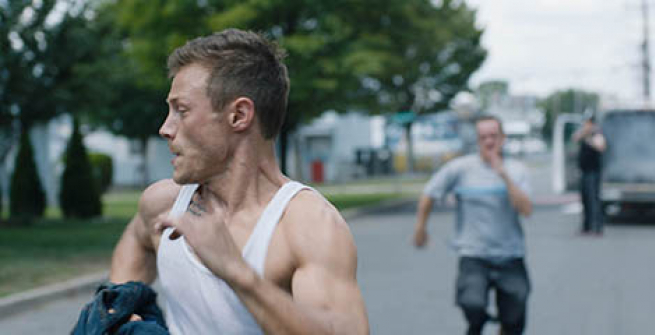Matt Porterfield has written and directed four feature films, all set in his hometown of Baltimore. His latest, Sollers Point, tells the story of a young man just released from prison and living under house arrest with his father. You can stream the film (along with Porterfield's earlier films, Putty Hill and I Used to be Darker) for free with your library card using Kanopy.
We spoke with Porterfield about his film, his relationship to his city, and the shifting landscape for independent film. Be sure to scroll down for his favorite films on Kanopy.
Can you describe the film and what it’s about?
Sollers Point is a naturalistic drama set in the working-class neighborhoods of southeast Baltimore. The story follows a young man just released from prison who’s navigating this world, looking for work, and reconnecting with people from his past along the way.

Where did the idea for this film come from, and how did it develop into the final product?
The neighborhood that inspired the film was once home to Baltimore’s steel industry. My grandfather was a steelworker, and I wanted to reconnect with this history while grounding the film in the present. Today, the jobs the industry provided are gone, so men of my generation living in this area have very little opportunity for work. Lots of kids I knew growing up turned to the illegal economy, ended up selling drugs, doing time. I wrote a character who embodied this situation, but whose journey onscreen allowed me to push outward and explore other characters and facets of living in this city and in America at large.

In the end, we shot every scene in the script, but it was a bit too sprawling and tangential and we cut a lot in the edit. It turned out we needed to stay closer to the lead character, Keith. As portrayed by McCaul Lombardi, he’s extremely compelling, even if he’s often frustrating, too.
How did the making of this film differ from that of your previous films? How was it the same?
Of all my films, Sollers Point has the tightest, most precise narrative line, which made it essential for us to capture certain scenes as written. There was less room for improvisation and experimentation. The script also contained the first action sequences I’ve had to direct. I was nervous about them, but they turned out to be some of the most satisfying sequences to shoot. We had a larger crew on this film, as well, with more moving parts.

But Sollers Point has a lot in common with my previous films, too, especially Hamilton and Putty Hill. They’re all character-driven, feature a diverse ensemble cast, and deal with themes of family, work, community and place. In fact, I like to think of Hamilton, Putty Hill and Sollers Point as a loose trilogy, exploring different shades of the same young, working-class, male character and the community in which he lives.
Most of your work takes place in Baltimore. Can you talk a little about what Baltimore means to you and why it plays such a central role in your work?
Baltimore is my home. It’s where I was born and continue to live. But I moved to New York City at eighteen to study film and I lived there for seven years. I think that time away gave me the distance and desire to understand the place that I’m from. The process of making films here has been exploratory, driven by a need to identify and articulate some of the things that make my city unique. My work in Baltimore is an attempt to capture this place in a sensory, material, relatable way.
You’ve often worked with non-professional actors and fresh faces. What was it like working with a veteran like Jim Belushi?
It was very exciting for me to direct a number of more professional actors in this film, especially Jim Belushi. Jim was very collaborative and creative, bringing years of experience in movies, television, and live comedy to the table. I learned a lot from him. And he was just as comfortable working alongside the pros as he was playing opposite actors who were new to the screen. He brought a lot out of everyone else, giving just as much to his scene partner when he was off-screen as he did when he was on camera.

What’s your general take on the film world these days from the perspective of an independent filmmaker?
I think there are lots of exciting things going on in global cinema as well as in the regional, micro-budget American independent film scene. But in America, I think it’s a lot harder to find audiences for your work and sustain a living making movies. There’s just so much visual, time-based media out there. So we’re competing with television, web series, video games, apps, the emerging VR experience and also branded content. I think as filmmakers we’re expected to diversify in order to survive, but all I’m really passionate about making are movies. I’ve accepted that very few people are going to see them in a theatre, but I’m okay with that. I’m happy that well-curated streaming services exist for people to find movies online they’d otherwise never have an opportunity to see.
What’s your relationship with libraries, and how does it feel to know your work is accessible for free to library users through a service like Kanopy?
I love libraries. I’ve written a lot of my scripts in libraries—the Rose Reading Room at the NYPL, Enoch Pratt in Baltimore, the Sheridan Libraries at Johns Hopkins University (where I teach). I love being surrounded by books and media. I love being in a quiet space full of people studying and learning. And I love Kanopy. It’s been a great teaching tool and resource for me and my students. I was overjoyed when I found out Sollers Point was available on Kanopy. They have such a great collection of films to discover.
Matt Porterfield's Kanopy Recommendations
- Boy Meets Girl, Leos Carax (1984)
- Personal Problems, Bill Gunn (1980)
- The Human Surge, Eduardo Williams (2016)
- Born in Flames, Lizzie Borden (1983)
- Public Housing, Frederick Wiseman (1997)
- Leviathan, Lucien Castaing-Taylor & Véréna Paravel (2012)
- Summer 1993, Carla Simón (2018)
- From What is Before, Lav Diaz (2014)
- Rat Film, Theo Anthony (2016)
- The Strange Little Cat, Ramon Zürcher (2013)
